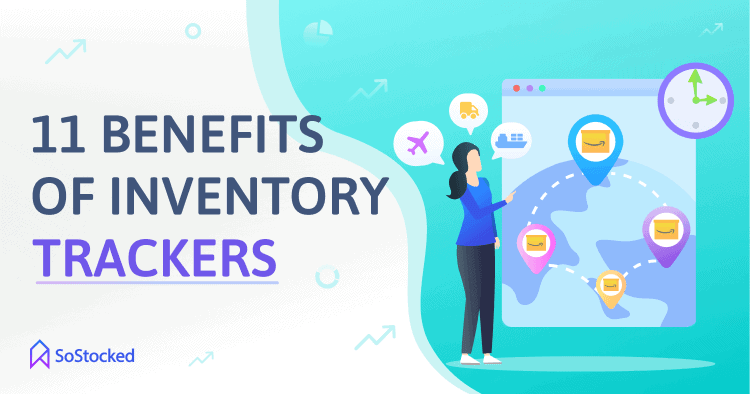
11 Ways Amazon Inventory Trackers Improve Inventory Management
Are you having trouble getting your inventory to the right place, at the right time, and in the right quantity and condition? You’re not alone.
As a seasoned Amazon seller, I can genuinely say that it’s challenging to track and monitor a product that goes through a long supply chain process before it arrives at its final destination.
One day, your inventory is in the hands of your supplier in China. Then next week, it goes to the freight forwarders in the port of Shanghai, customs officers in the US, and so on – until it finally lands in your target warehouse. Meanwhile, you’re back home working away on growing your Amazon business, which means you don’t have all day to keep track of your inventory.
What if some items are missing? Or they arrive in bad condition? You usually can’t just drop everything and physically go to the warehouse to find out.
Multiply that difficulty level by ten if you’re managing multiple SKUs across multiple global marketplaces! So yes, inventory tracking can be a logistical headache.
Luckily, SoStocked has an Amazon inventory tracker that can help you keep an eye on all the different phases of your inventory to help ensure your stock levels remain optimal at all times.
In this Inventory Tracker guide, we’ll take a look at:
What is an Amazon Inventory Tracker?
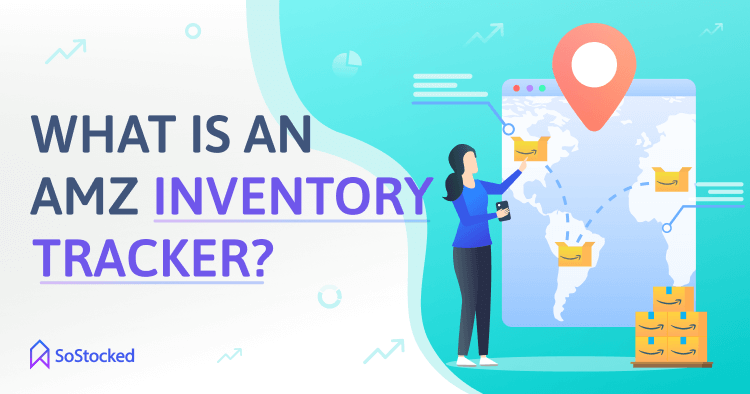
An Amazon inventory tracker is a tool that allows you to track and monitor inventory within your supply chain management system. It provides accurate inventory checks and data about the exact location of your inventory, In Production orders in progress with each supplier or manufacturer, inventory levels within each third party warehouse, and current inventory levels at Amazon, among other important information.
Suppose you’re in the business of selling women’s swimwear. Summer’s fast approaching and you want to make sure you’ve got enough stock at FBA to supply the expected uptick in demand. You could check your stock levels through the SoStocked Amazon inventory management software and you discover that hot-selling items like bikinis, monokinis, and wetsuits are lower in stock than your projected upcoming sales demand.
Naturally, you’ll want to reorder from your supplier well in advance of summer to avoid missing out on those sales. But placing a purchase order is only half the battle. You also want to ensure that your inventory gets shipped to your warehouse in time for the summer sale events.
Enter inventory tracking.
Inventory tracking makes inventory management much more, er, manageable. Once you’ve sent a Purchase Order (PO) to a supplier, use a stock tracker to keep an eye on your product every step of the way from the moment the supplier receives your PO and starts production all the way to delivery at its final destination, which includes packaging, shipping, customs clearance, and so on.
With an inventory tracker, you can also see all critical information laid out in a well-organized dashboard, making the process more efficient.
But that’s not the only reason why Amazon sellers should start using an inventory tracker.
11 Ways Amazon Inventory Trackers Improve Inventory Management
Increases product visibility
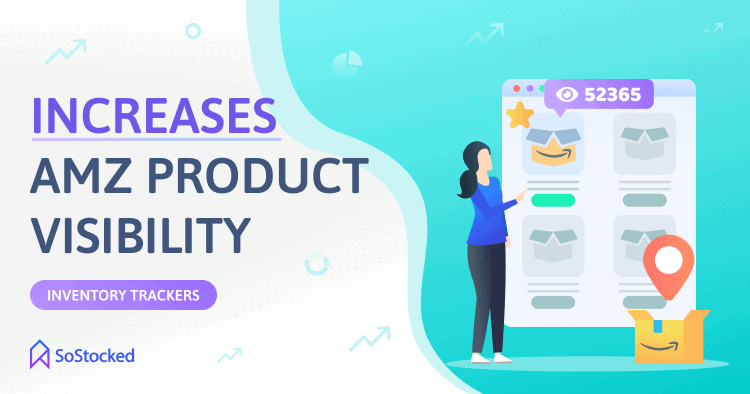
43% of small retail businesses struggle with low product visibility due to poor inventory management processes, such as inaccurate inventory data and communication failure at some point on the logistics chain. Either way, the affected businesses end up having to deal with erroneous production schedules, wrong order quantities, delayed shipments, and often experience difficulty tracking their stock as it comes in and goes out. No matter the reason, though, these businesses are putting themselves in a situation where they can be unaware of exactly when they need to reorder or transfer in order until it is too late. This often leads to stockouts or the need for expensive express shipments.
Suppose you’re dealing with the same issues as above. In that case, it’s time to invest in an inventory tracking tool that gives you the ability to have better control over your inventory levels and to place reorders and transfers in time to keep in stock without expensive air shipments.
Amazon inventory tracking software like SoStocked provides you with the kind of digital infrastructure that helps you to gather, share, and analyze information on your inventory levels and to set and track the lead times from your production and shipping processes.
In SoStocked, you can see where your inventory is coming from exactly (supplier or warehouse), where it’s going (warehouse/supplier to Amazon FBA in the US, UK, or other Marketplaces or a third party warehouse), how and when the products will be arriving (e.g., cargo by sea in the US within 30 days or by air in 10 days).
With inventory tracking software, you can map all of your inventory processes online, ensuring that even without going to your warehouse, you can maintain an accurate accounting of which products are going in and out of your FBA or 3PL partner warehouses, and when. Doing so increases your product’s visibility, making a complex logistics chain just that much more simple and organized.
Know whether inventory is arriving by sea, air, or ground
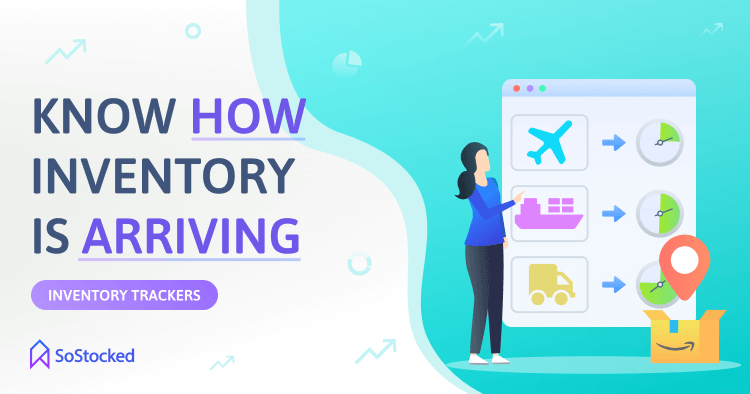
Manage your expectations by knowing how and when your inventory will be arriving at your warehouses in the US, UK, and other marketplaces.
As you know, ocean, air, and ground shipping options all have their pros and cons. While air freight is fast and convenient, it can be too expensive for some products and will always each at your margins. In contrast, cargo by sea and ground transports are just as reliable yet more affordable, although they can take a very long time to arrive (e.g., around 30 days for ocean freight).
Nevertheless, whatever you end up choosing, you must know the lead times of your chosen freight transport to track your inventory accurately. A more advanced inventory tracker will allow you to break down your lead times between production, shipping, and other stages to allow you to track estimated completion and arrival dates so you can plan ahead to arrange the logistics of the various stages, avoiding the downtime that can sometimes occur when, let’s say, your supplier and freight forwarding company are not exactly in sync as to when the inventory will be available for shipping.
You can even use the data from previous transactions to make better shipping decisions in the future. Adjusting the lead times in your individual purchase orders to reflect the actual reality of what occurred with your shipments will allow you to identify opportunities to shift future orders’ lead times to more closely match what will actually happen in the real world. For example, if the freight forwarder is consistently missing their deadline which leads to stockouts on your end, it can cost your business a lot of money. Knowing this is likely to occur again, you can either adjust your lead times so that you reorder with enough time to account for such delays, or you may decide to find a more reliable international shipping company instead.
Tracks how many products are delivered successfully
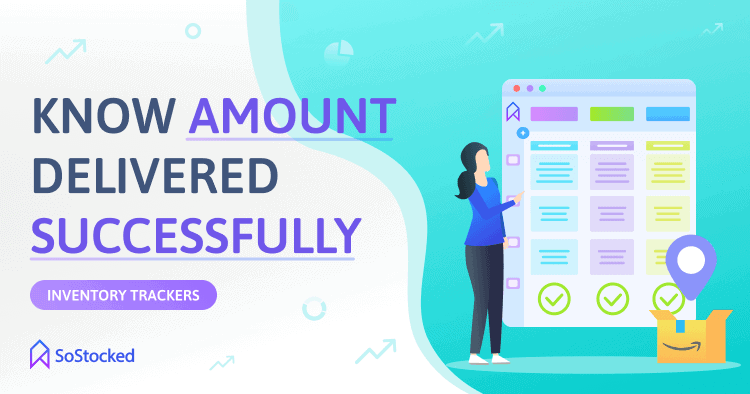
Some products may get lost or stolen at some point in the shipping and handling process. And as you know, missing units are detrimental to your business. It decreases profits and increases your risk of stocking out and you’re likely to spend more money on air shipping to receive the extra stock in time for Prime Day or other special events.
SoStocked’s Amazon inventory tracker allows you to check how many products have successfully arrived at FBA across multiple global marketplaces and to filter to see only those shipments with missing inventory so you can follow up on them.
As for 3rd-party warehouses, it allows you to keep your own record of what inventory you should have within each location instead of trusting and relying upon whatever archaic system your 3PL might have. If your numbers don’t match theirs, you’ll be able to find out why and get that missing inventory hunted down. This is so helpful and has saved my business more than once!
Oh, and if you’ve ever had to pay your 3PL for an inventory count because you didn’t trust their numbers only to find out that they were right all along, that’s a thing of the past. You can stay on the same page and catch discrepancies before it’s too late, or too costly.
With proper inventory tracking, you can easily trace inventory with damaged or missing units, wrong order quantities, or just plain and simple math errors back to their source to get them resolved quickly, making the necessary adjustments well before they bite you.
Streamlines your inventory processes
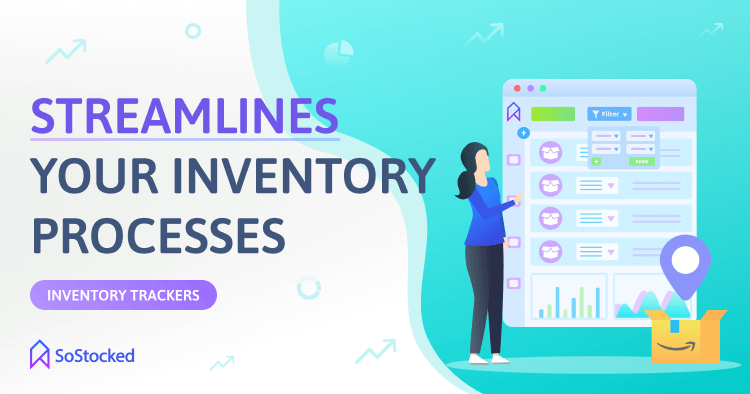
You should also set minimum or maximum stock levels for each ASIN per marketplace if your tool allows it. Then you can view the list of products that are nearing that level and place and send new purchase orders quickly.
Customizable inventory tracker apps like SoStocked allow you to filter, create groupings and move things around in your dashboard to show only the orders and information you want to see, thereby simplifying some of your inventory management processes and improving visibility and focus.
For example, the ability to isolate products that are at risk of stocking out, or those that are overstocked means much more actionable efforts can be made to remedy the situation. These dashboards can also be viewed by your marketing team in order to act accordingly when creating their marketing plans. Other important dashboards can be reviewed in our actionable Amazon Dashboards article.
Streamlined processes also mean fewer spreadsheets to deal with. We all know entering data manually into spreadsheets, keeping that data up-to-date, and juggling multiple spreadsheets can be time-consuming and error-prone, especially if you manage several SKUs.
What if you could put all of them together in one centralized location? Or just be rid of spreadsheets for once?
An inventory management system with a customizable order tracking tool gives you the ability to be somewhat omniscient – doing and seeing everything on a single platform.
For more inventory management tips, read How to Organize Your Inventory.
Helps you stay within your Amazon restock limits
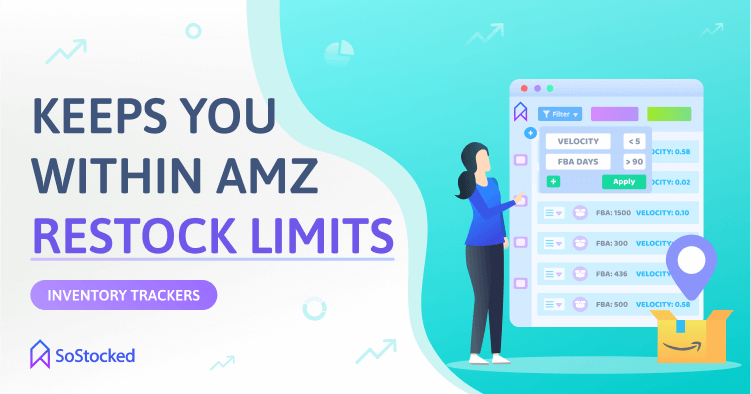
If you’ve been living under a rock, Amazon has recently replaced ASIN-level quantity limits with storage-type limits. It means restock limits are measured by storage type, and you’ll need to check your limits by going to Seller Central’s Inventory Performance Dashboard and find the Restock Limits tab. Click on the Storage Volume tab to review your total Storage Volume per Storage Type. For more details, read “How To Manage Amazon Restock Limits“.
Before you inbound another shipment to your FBA warehouse, check your Amazon restock limits to see whether that’s a good idea. If you’ve already maxed out your restock limits with your existing inventory at a specific FBA warehouse, Amazon may reject your incoming inventory or not let you create shipments in the first place. Processing rejected shipments can be expensive and tedious, so avoiding it is key.
Use an inventory tracker with an inbound shipment reporting tool like SoStocked. It shows what you have inbound to Amazon in a clear and simple dashboard so you can stay on top of your inventory levels.
Prevents stockouts
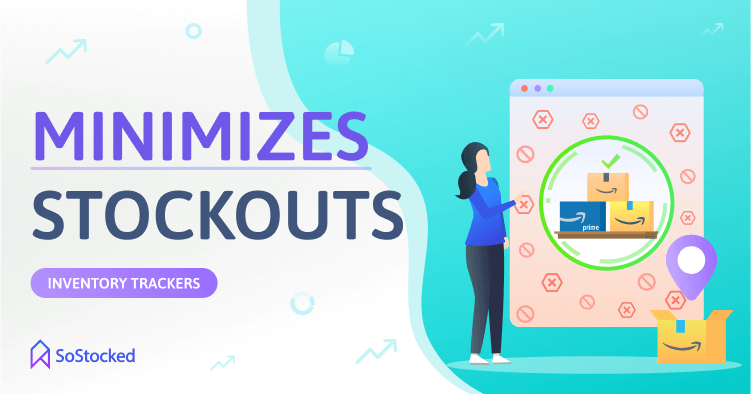
As I’ve mentioned before, maintaining an inaccurate inventory report may result in stockouts, lost sales, and even expensive air shipments. So it’s not advisable to just rely on old-school inventory management practices like warehouse inventory counts and remembering numbers from memory to decide when and what to reorder. In fact, 34% of businesses ship late because they don’t realize they’re selling products that are close to stocking out.
Use data from your inventory management software and Amazon inventory tracker to:
- See what units are dropping below your buffer stock threshold point for reordering or transferring.
- Compare your inventory level against projected product sales.
- Get reorders placed to arrive before you run out of stock.
You should also set minimum or maximum stock levels for each ASIN per marketplace if your tool allows it. Then you can view the list of products that are nearing that level and place and send new purchase orders quickly.
Reduces risk of over-ordering
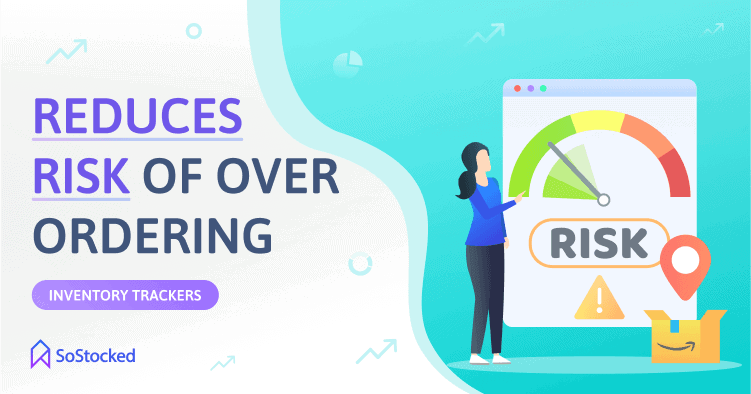
Keeping up with the changes in your inventory data will eliminate unnecessary expenses you didn’t know you were accruing.
Any inventory left to rot in a warehouse is profit loss because you’re not making money by letting it sit there for months and, at the same time, you’re accruing storage fees. You’ll spot problems like this if you have an Amazon inventory management software and order tracker that gives you access to data to inform trends and buyer behaviors.
You’ll also potentially have problems with not being able to restock your better-selling products as this inventory will be taking up valuable space within your restock limits.
Inventory tracking helps you dodge two costly problems – dead stock and storage costs.
Use SoStocked’s inventory forecasting software to get accurate inventory data. Combine that with its order tracker’s on-hand inventory reporting feature to look at how much stock you have at each stage of your inventory process, from Amazon to warehouse to inbound and in production.
Generates more accurate forecasting reports
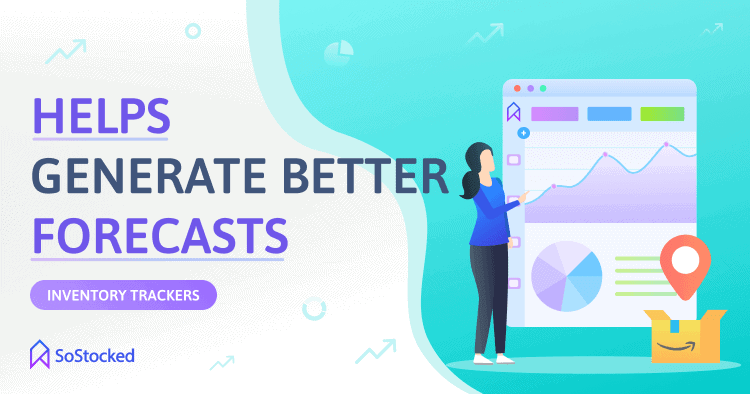
Successful Amazon sellers know they need to spend their hard-earned money wisely by buying the correct quantities of each product to keep sales going, prevent inventory shortage, and avoid dead stocks.
That’s why maintaining highly accurate inventory forecasting reports is essential. Without them, it can be time-consuming and challenging to identify the slow-moving products that you need to clear out to free up some cash to invest in new products, pay-per-click advertising, digital marketing, and more.
Spots problems in the supply chain early
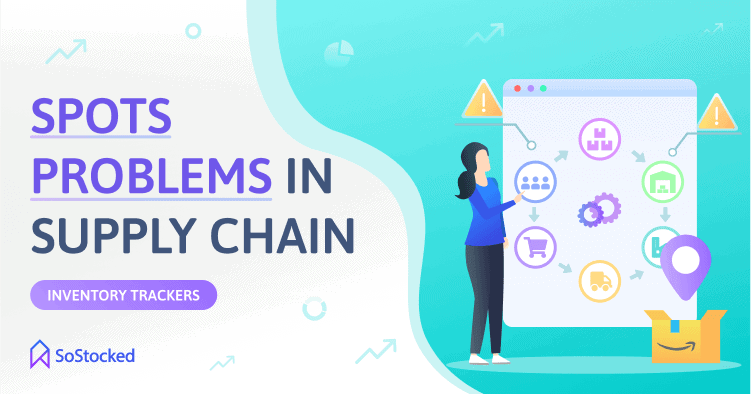
If you’re keeping track of your inventory levels, you’ll immediately detect problems like stockout risks, missing inventory, low product turnover rate, and late production schedules. Maybe your inventory failed to fully arrive from China on the date of delivery? You need to know the good and the bad. And one of the best ways to do that is by reconciling purchases and sales through a regularly maintained inventory management system.
Increases reordering efficiency
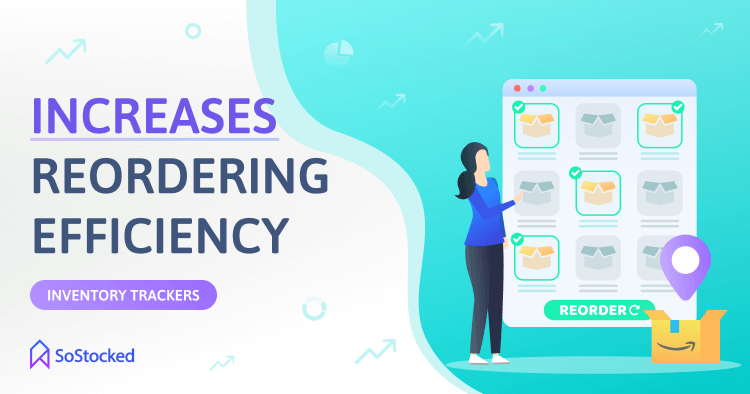
Increase the efficiency of your reorder processes with an Amazon inventory tracker that tells you what’s in stock. You can systematically look through your entire product catalog, allowing you to make informed decisions instead of checking with your warehouse before you write a purchase order.
Suppose your reports come from an advanced inventory tracking tool. In that case, you’ll quickly know if you already have products on order with your supplier along with their estimated lead times and the estimated dates and methods with which they will be delivered to your warehouse. You must have access to these details if you want to keep reordering under control.
For more restocking tips, read the Amazon Restocking Tips article.
Improves product visibility in the event of a product recall
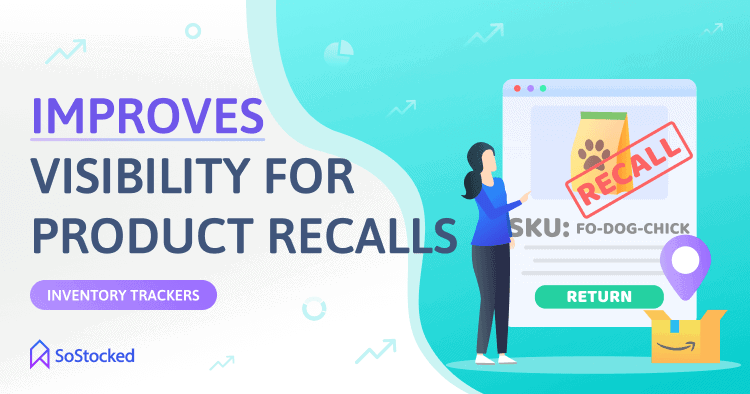
Inventory tracking improves product traceability that in the event of a recall, you can quickly identify SKUs or batches that need to be returned to your supplier. For example, mobile phones with defective batteries or pet foods with unsafe ingredients. Simply said, both sellers and suppliers will have a smoother recall process.
Get Accurate Inventory Tracking With SoStocked
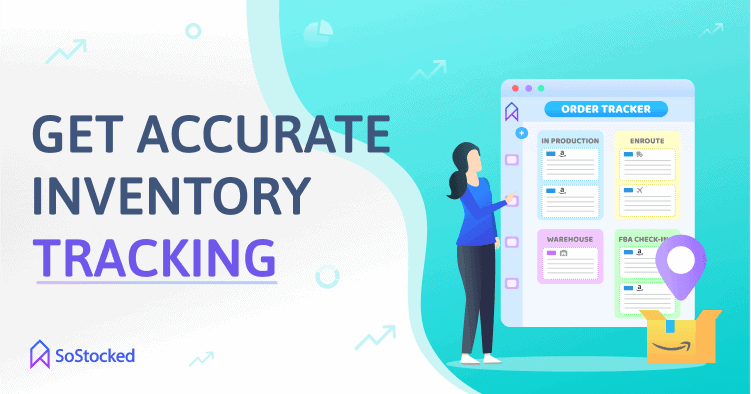
Inventory in retail businesses is only accurate 63% of the time. The main reason? Poor product visibility.
If your inventory data is inaccurate even ⅓ of the time, it’s extra challenging to determine your correct inventory levels and make accurate forecasting, forcing you to fill in the gaps with educated guesses, which can have negative consequences.
SoStocked’s Amazon inventory management software has an order tracker that tells you:
- What’s in stock at which warehouse
- What’s in production
- What’s en route
- What’s at the prep center
- Where is the inventory exactly: 3rd-party warehouse or Amazon FBA
- How the inventory will arrive: by sea, air, or ground
- Estimated time of arrival
Other features
- Kanban board. A dashboard that lays out the exact status of each PO and shipment. You’ll see all orders and their various stages and can even drill down to isolate all orders scheduled to arrive at their final destination in the next 30 days. This helps you to hone in on short-term orders without being distracted by future long-term orders.
- View each shipment at a glance along with crucial details clearly in view, such as order status, mode of transport, estimated arrival time, and what the final destination is.
- Inbound shipments report. Shows what you have inbound to your warehouse(s) and FBA along with expected arrival dates.
- Inventory On Hand report. This shows you how much stock you have at each stage in the supply chain process, from In Production to Inbound to Warehouse to Amazon.
Tip: Match FBA shipment IDs to your POs for better inventory tracking.
How To Use SoStocked’s Order Tracking Tool?
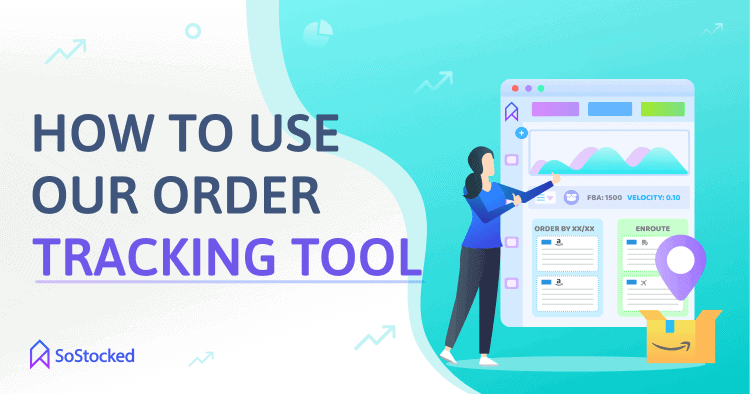
Using SoStocked’s Amazon inventory tracker is easy. Here’s how to get started:
- Create and save POs for new products. Here’s a detailed guide.
- Customize dashboards the way you need to see things. I recommend focusing on inventory arriving soon and what has arrived already to stay on top of your Amazon business.
- Utilize color-coding and icon features to track whether inventory is arriving by sea, air, or ground, what place it is originating from, and the final destination.
- Create filters and hide or show individual columns.
If you want only to view inventory that arrived within the last two weeks, create a custom filter that shows every PO that came within the previous 15 days. You can also use a filter to check other POs that will be arriving within the next 30 days or any custom number of days. Simply customize the order tracker dashboard however you like.
Another strategy to maintain optimal inventory levels would be using SoStocked’s Inbound Shipments report. This tool shows what you’ve shipped to Amazon and your warehouse. It’s also wise to use our Inventory On-Hand report to determine how much inventory you have at each step in the inventory process.
Pro tip: Regularly check for missing units from FBA for recently closed shipments directly within SoStocked and add Notes throughout the process of getting Amazon to reimburse you.
Tracking your purchase orders through an Amazon inventory tracker will yield several benefits for your retail business. It increases product visibility, streamlines your processes, and helps you to regulate inventory levels, all while saving you valuable time and money.
Need more information?
- Send Message: We typically reply within 2 hours during office hours.
- Schedule Demo: Dive deeper into the nuances of our software with Chelsea.
- Join Live Upcoming Webinar: New to Amazon inventory management? Learn three inventory techniques you can implement right away.
 Start Your Free Audit
Start Your Free Audit